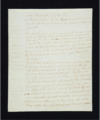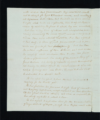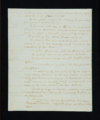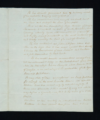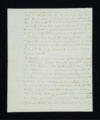View the most treasured American document in Gilcrease Museum’s archival collection July 2-7. This special, one-week-only exhibition features the handwritten copy of the Declaration of Independence (GM 4026.901) used in 1777 by Benjamin Franklin as part of his diplomatic communication with the court of Frederick the Great of Prussia. This copy of the Declaration is in the hand of Silas Deane, who served with Franklin in Paris.
Thomas Gilcrease acquired the museum’s copy of the Declaration of Independence after seeing it on the Freedom Train. The Freedom Train was the result of President Harry S. Truman’s desire to provide the American people, most of whom would never have the opportunity to visit the National Archives in Washington D.C., with an exhibition of patriotic objects documenting the nation’s heritage of freedom and the many sacrifices made over the years to preserve it. Between September 1947 and July 1949, the 126 items on display were seen in all 48 states. The exhibition traveled in seven cars pulled by the locomotive “Spirit of 1776,” and was guarded by 29 U.S. Marines who had seen combat in World War II. During the Freedom Train’s 15-month tour of the nation it traveled more than 37,000 miles, made stops in 326 cities, where 3,521,841 Americans saw items like the Declaration of Independence.
The Declaration of Independence was the product of a committee of five appointed by the Second Continental Congress: John Adams, Benjamin Franklin, Thomas Jefferson, Robert Livingston and Roger Sherman. Jefferson, only 33 years old the summer of 1776, had the well-deserved “reputation of a masterly pen.” After several drafts, Congress adopted the Declaration of Independence on July 4, 1776.
For the majority of colonists in July of 1776, the Declaration of Independence put into words the sentiments that had been growing for years. As John Adams noted, “The Revolution was effected before the war commenced … it was in the minds and hearts of the people ….” Declaring independence was one thing; breaking free from the grip of the British Empire would require seven long years of war. American victory in the Revolutionary War was assured when the Continental Army, under the leadership of General George Washington, and supported by the French navy, forced the surrender of approximately 8,000 British troops at Yorktown, Virginia, on October 19, 1781.
The Declaration of Independence
